Abstract
1. Smooth muscle activities in rectum and internal anal sphincter have been recorded using intraluminal balloons.
2. Reflex activation of the sphincter, caused by distension of the rectum, has been assessed before and after various combinations of blocking drugs.
3. Responses to stimulation of hypogastric or sacral nerves, or to the administration of drugs with autonomic actions have been tested before and after various combinations of blocking drugs.
4. Results indicate that the tone of the internal anal sphincter is influenced by a number of neural mechanisms. These include motor pathways involving both α-adrenergic and cholinergic mechanisms and inhibitory pathways involving both β-adrenergic and non-adrenergic non-cholinergic mechanisms.
5. Cholinergic contractions of the sphincter were converted to relaxations after α-adrenergic blockade. This indicates that the contractions are an indirect effect operating through an adrenergic reflex. Cholinergic relaxations may also be indirect and operate through reflex inhibition secondary to rectal contractions.
6. Sphincteric motor activity is controlled largely through α-adrenergic mechanisms by adrenergic nerves acting directly on the muscle. β-Adrenergic inhibitory mechanisms are thought to operate indirectly via ganglia.
7. The over-all control of the sphincter is by complex reflex mechanisms involving numerous pathways and the activity of the sphincter at any one time is determined by the net balance between motor and inhibitory influences.
8. Sacral nerve stimulation indicated that it contains cholinergic nerves to the rectum, non-adrenergic non-cholinergic inhibitory axons to the sphincter and variable numbers of adrenergic axons to the sphincter.
9. Responses of the sphincter to drugs and nerve stimulation were often variable, as has been described many times in the literature. It is considered that this is due to complex combinations of indirect reflex effects, secondary to activation of structures outside the sphincter, operating with or against direct effects on the sphincter itself.
Full text
PDF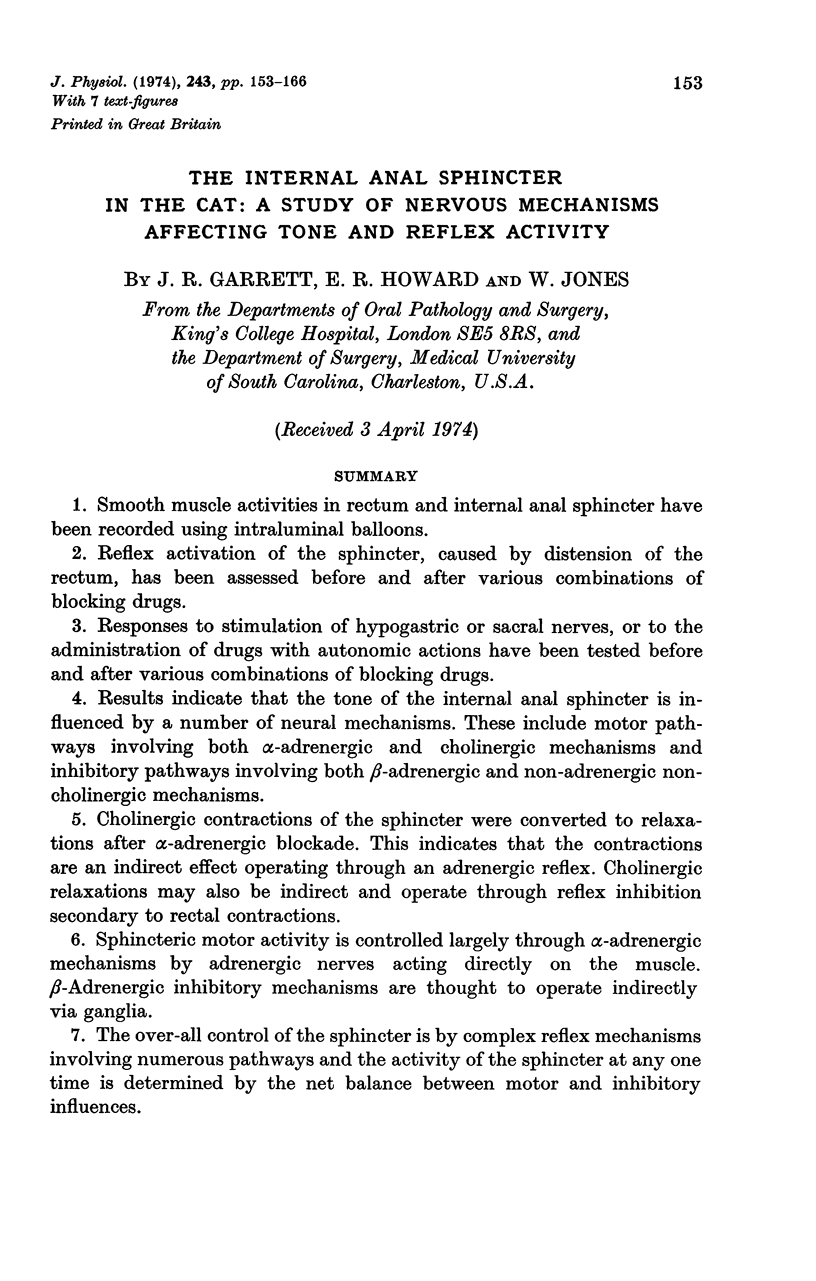
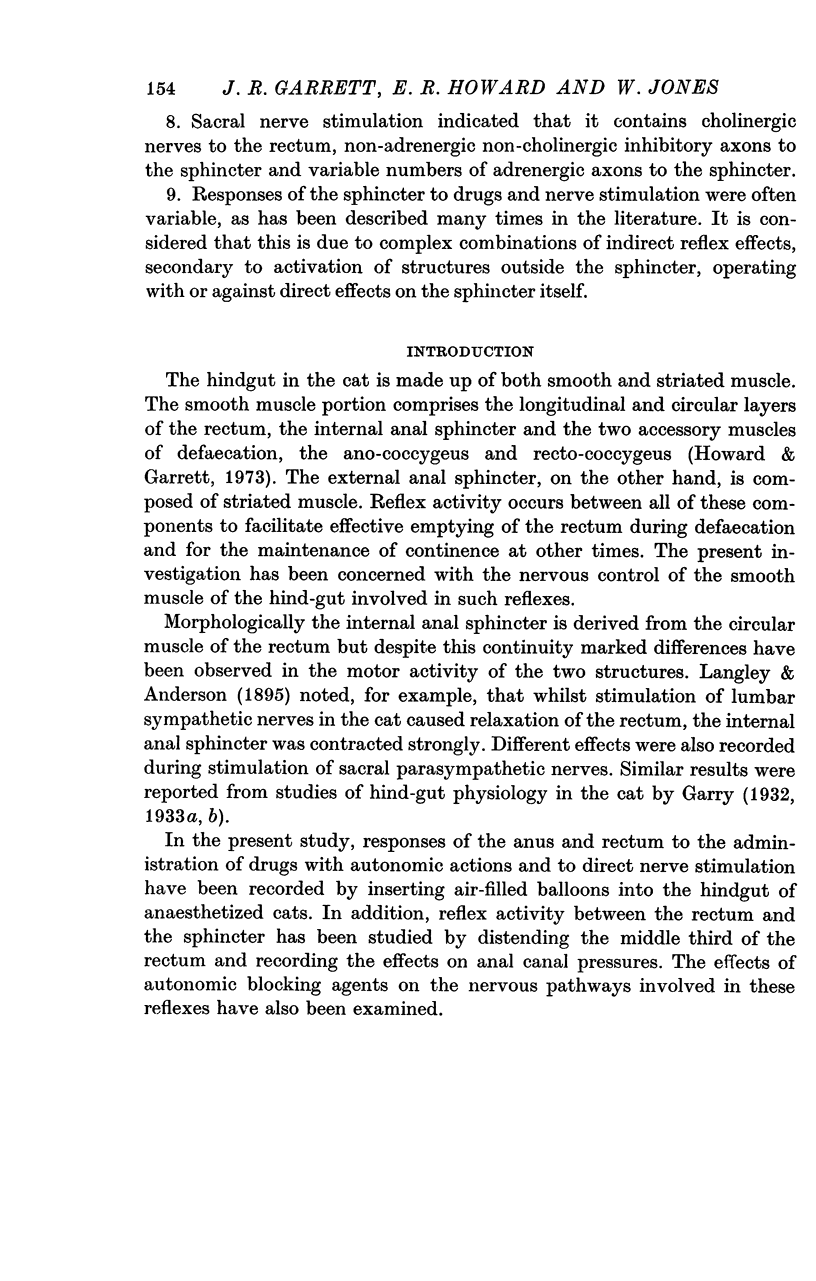

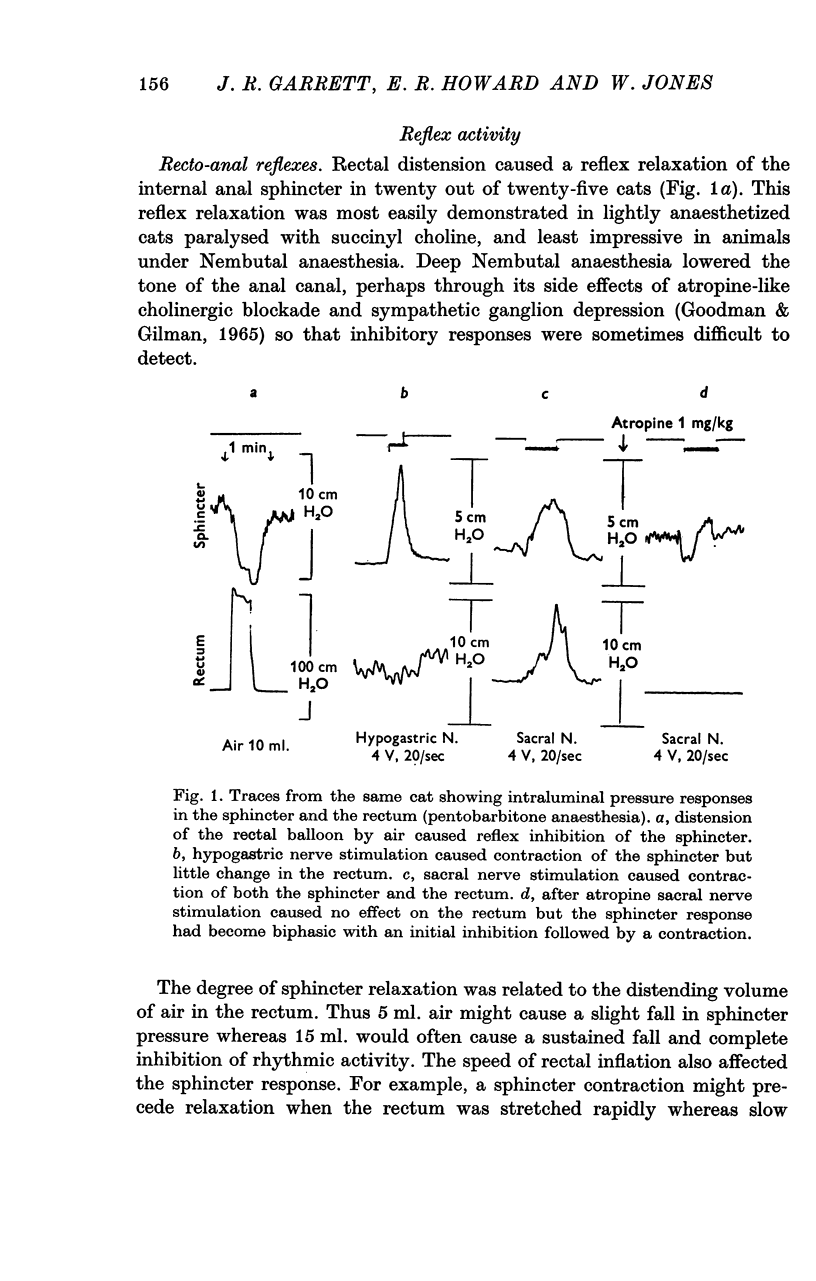
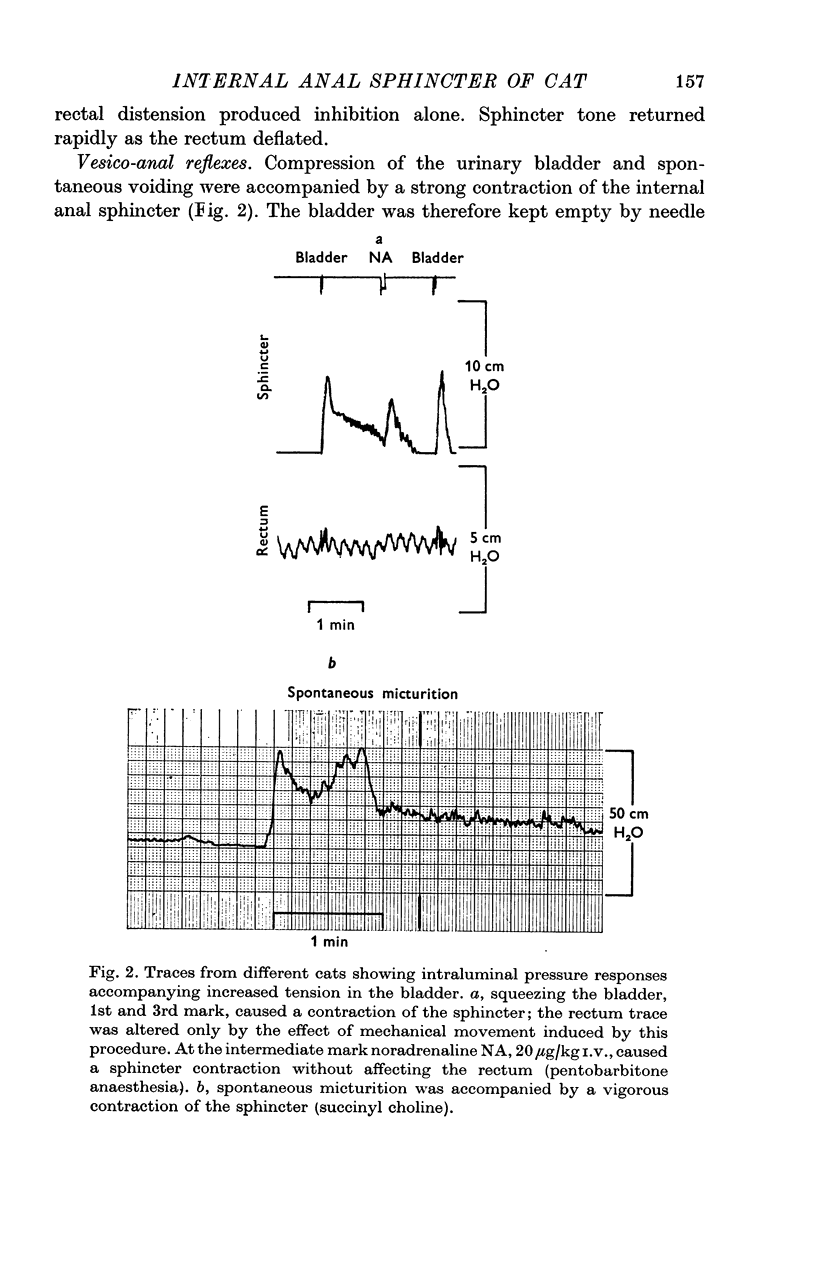
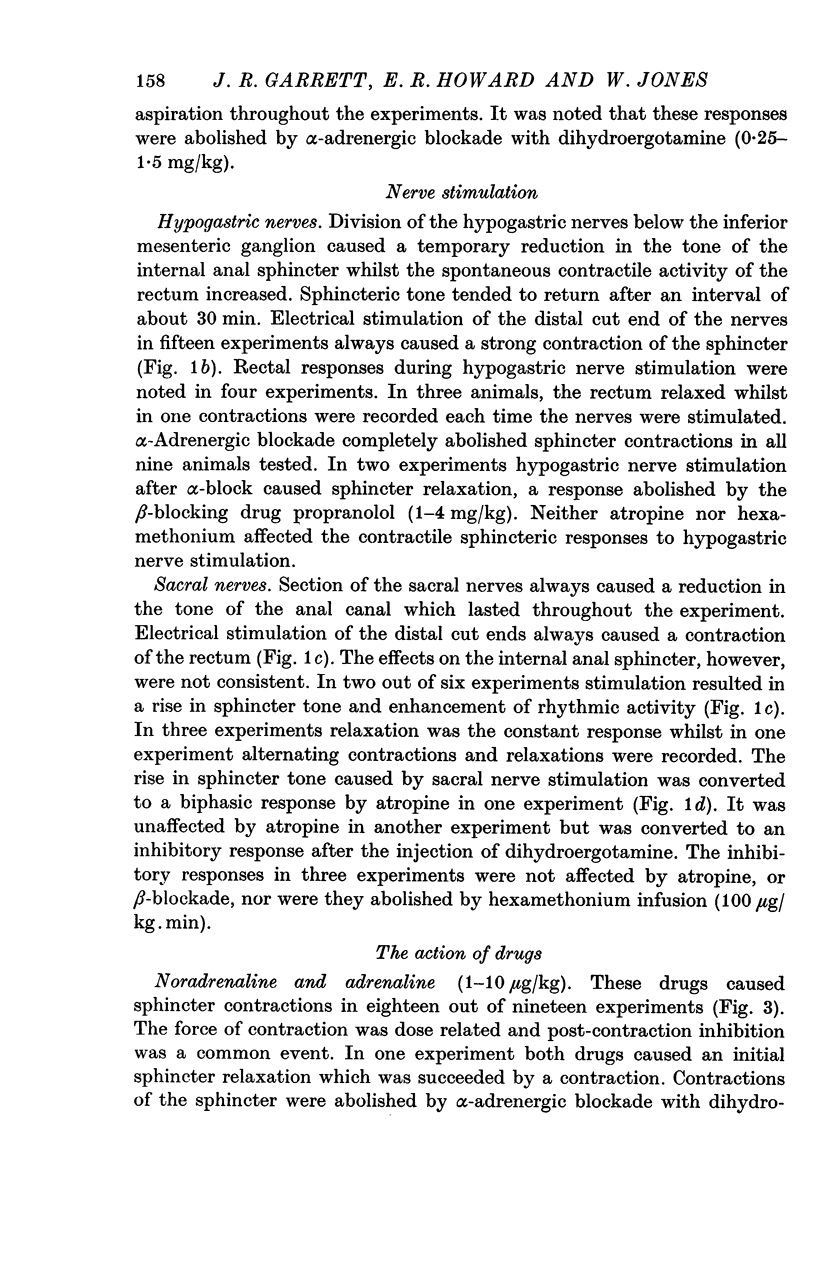
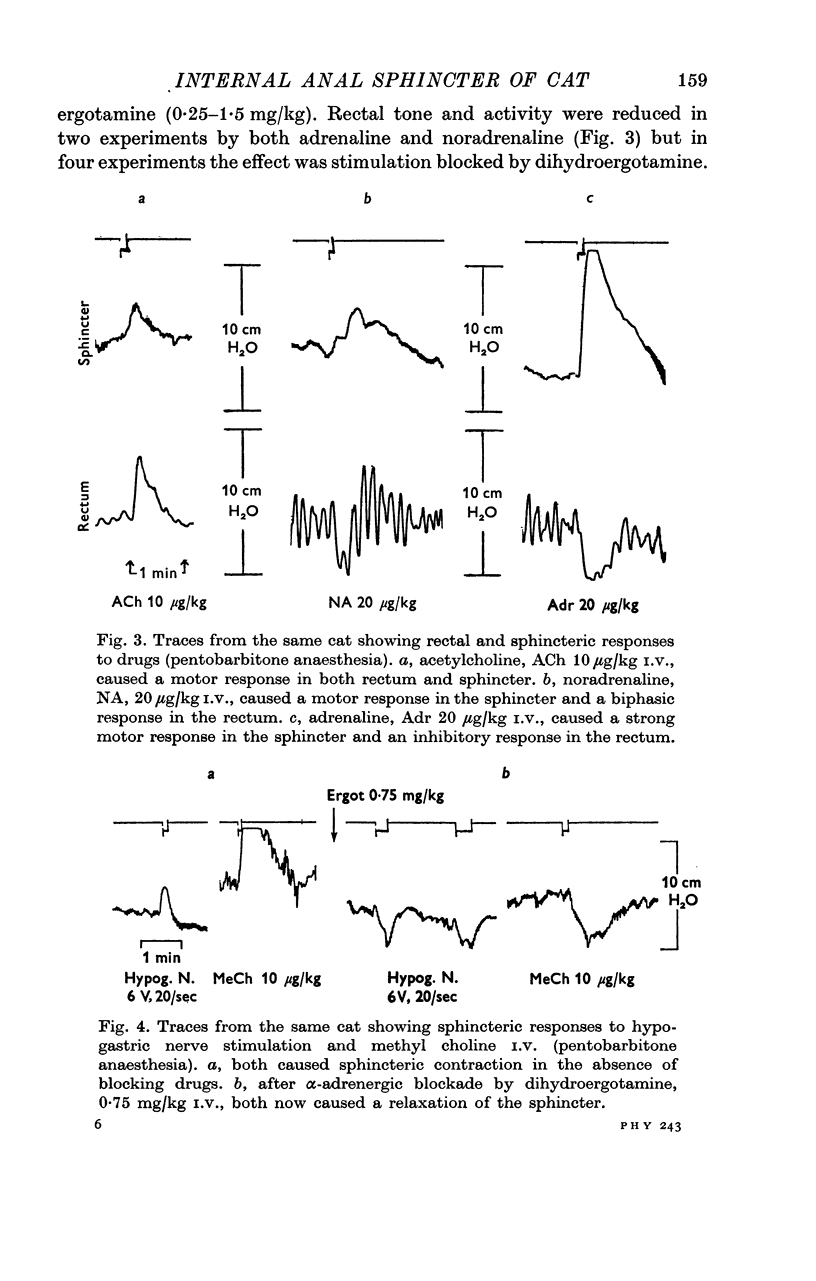
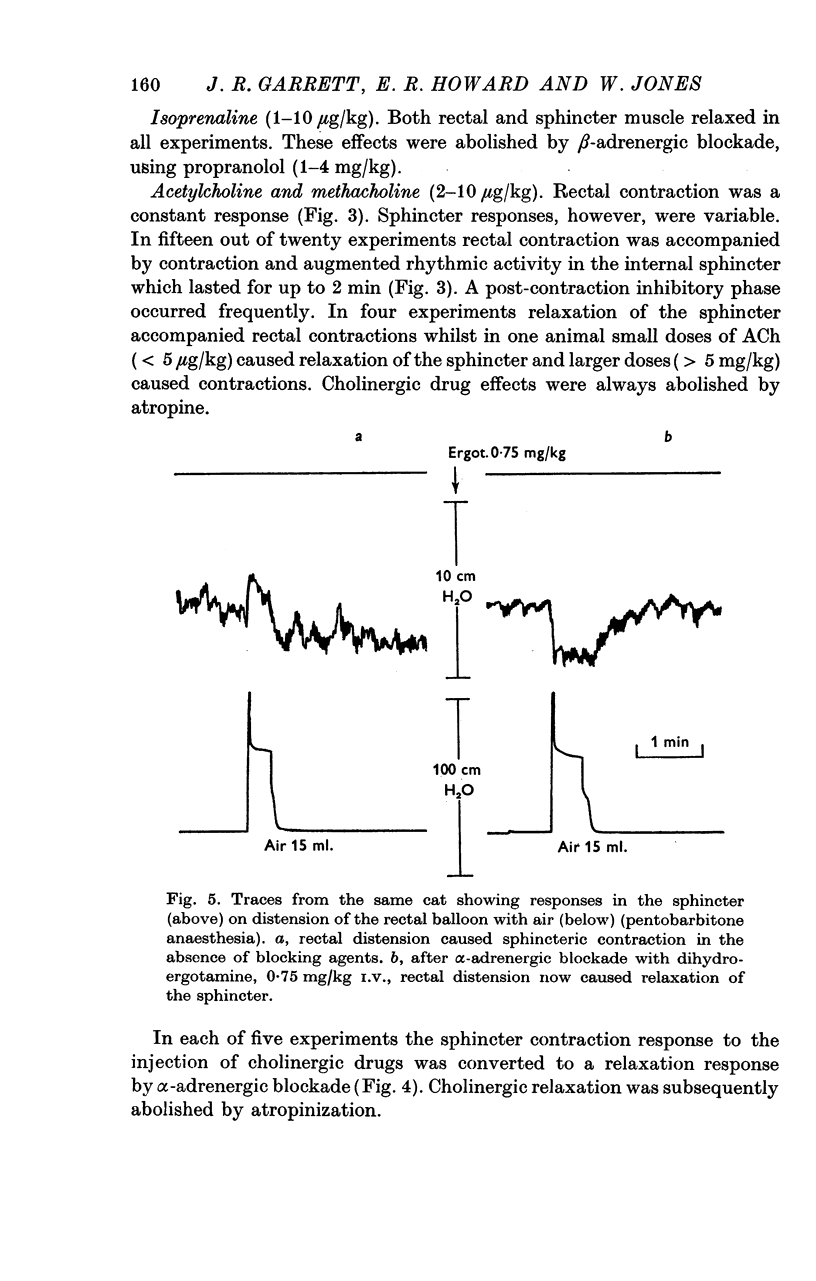
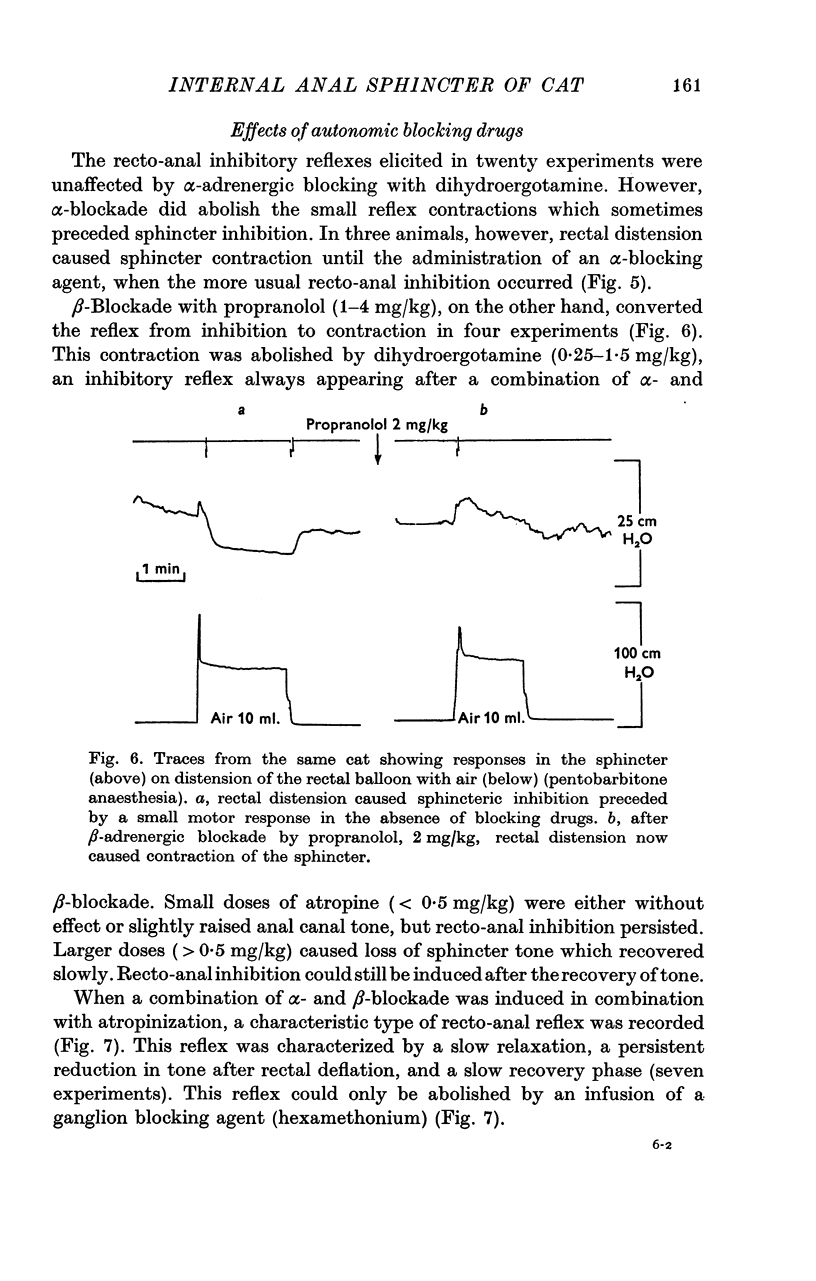
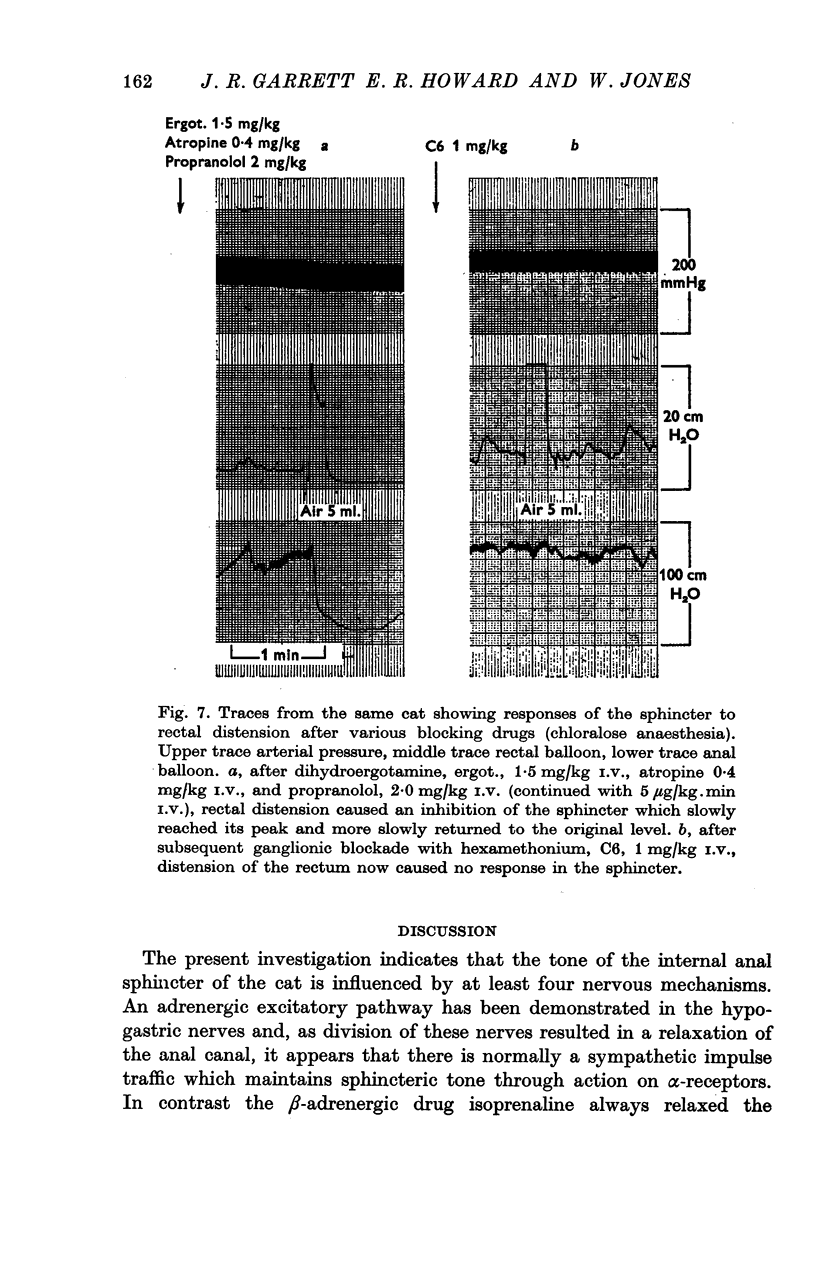
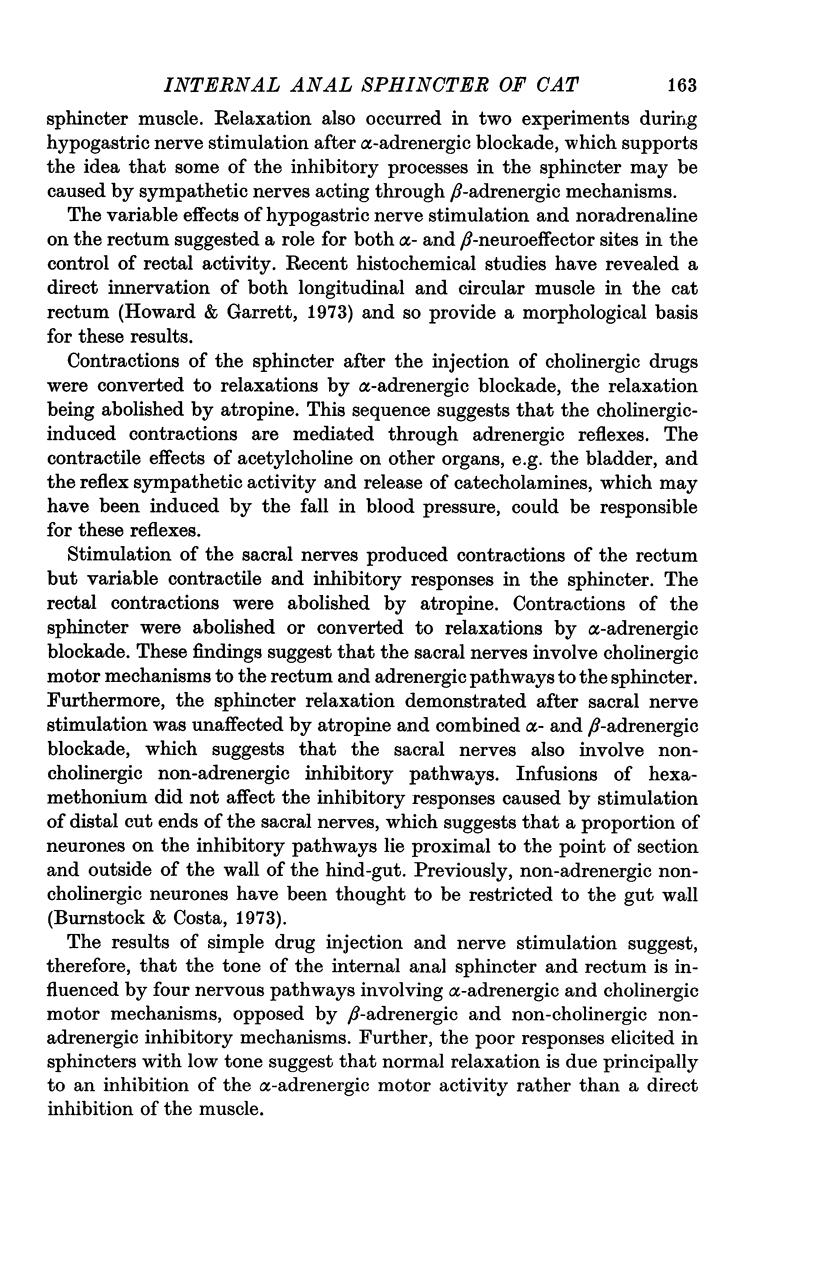
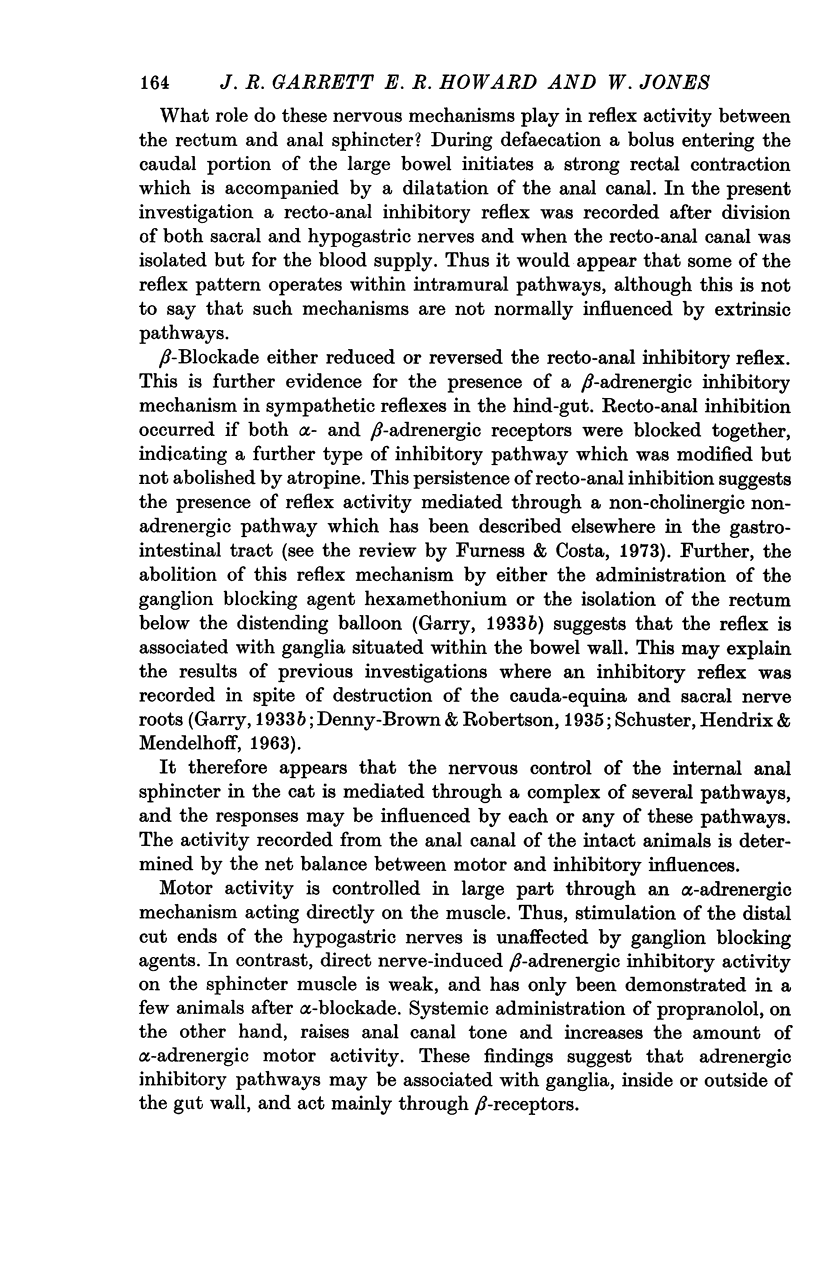
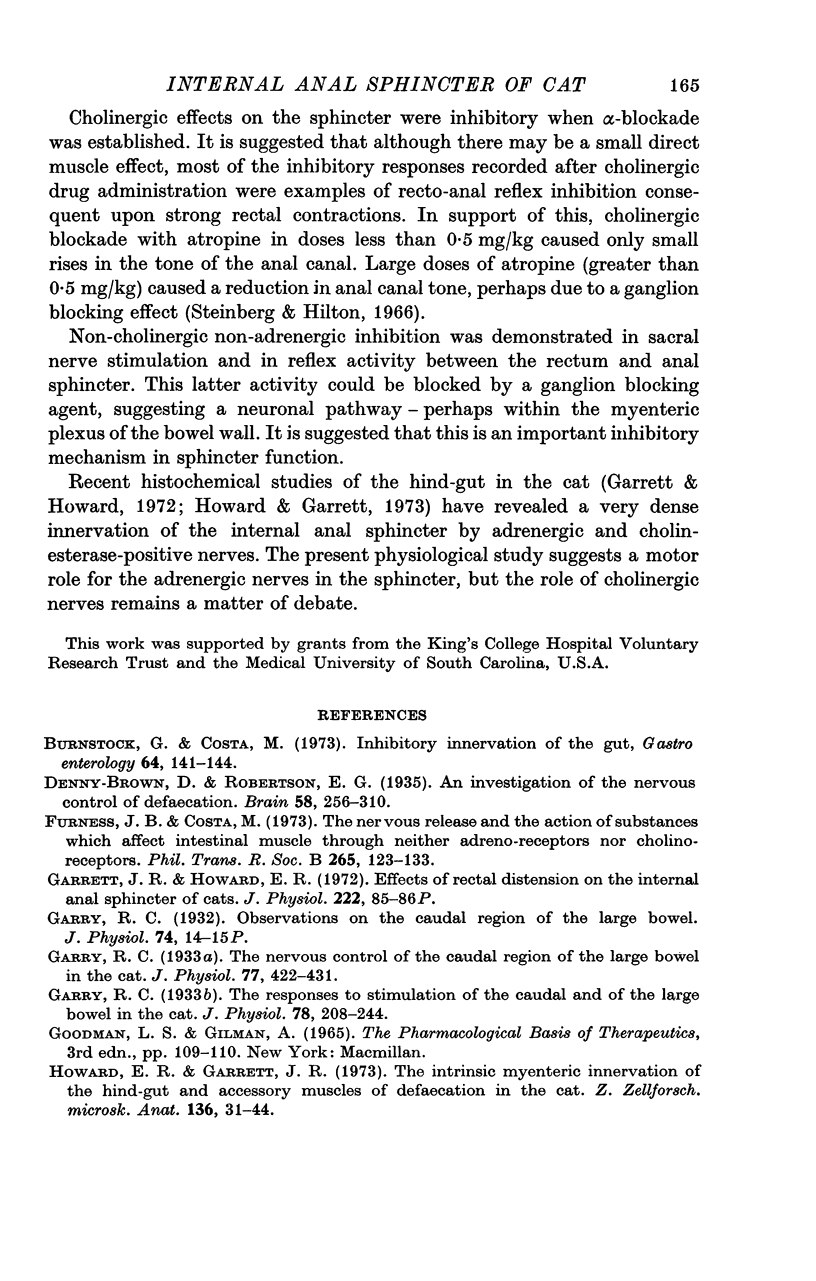
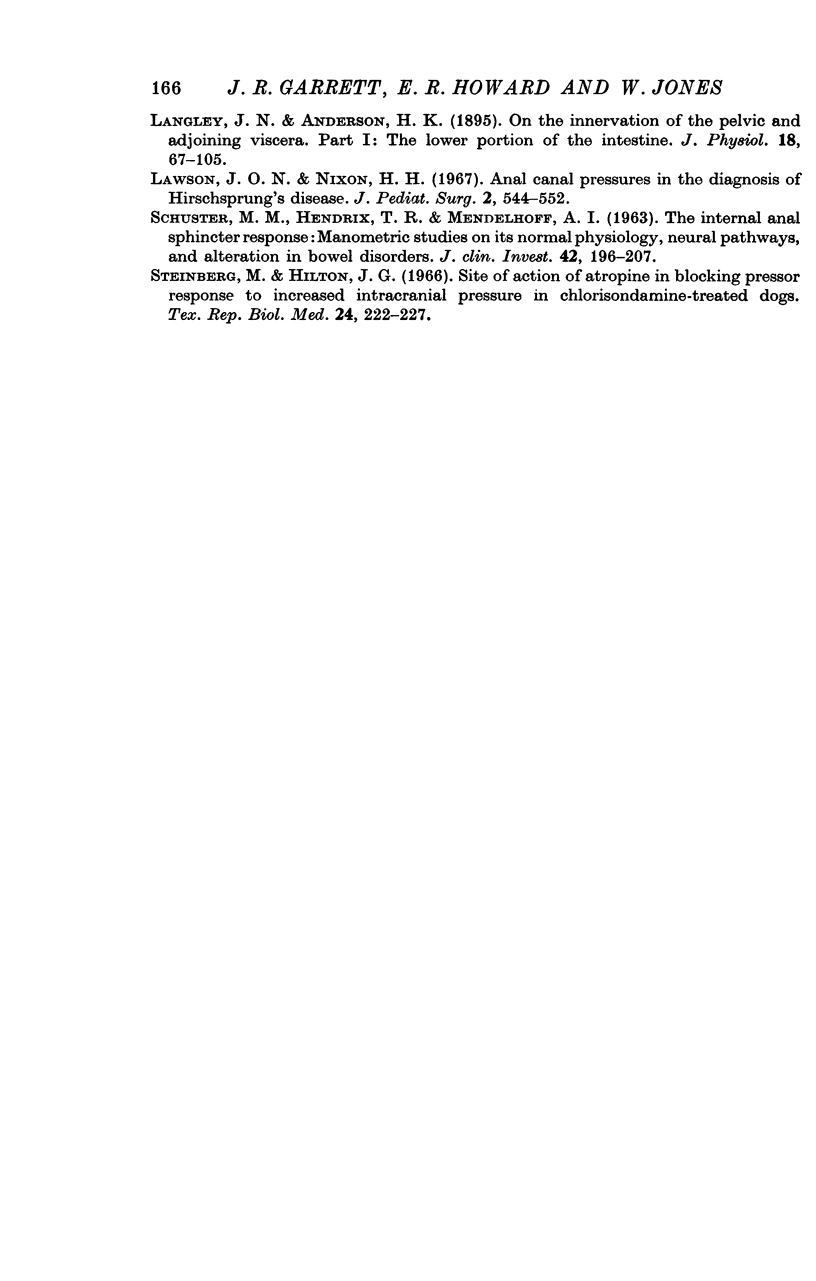
Selected References
These references are in PubMed. This may not be the complete list of references from this article.
- Burnstock G., Costa M. Inhibitory innervation of the gut. Gastroenterology. 1973 Jan;64(1):141–144. [PubMed] [Google Scholar]
- Furness J. B., Costa M. The nervous release and the action of substances which affect intestinal muscle through neither adrenoreceptors nor cholinoreceptors. Philos Trans R Soc Lond B Biol Sci. 1973 Mar 15;265(867):123–133. doi: 10.1098/rstb.1973.0015. [DOI] [PubMed] [Google Scholar]
- Garrett J. R., Howard E. R. Effects of rectal distension on the internal anal sphincter of cats. J Physiol. 1972 Apr;222(1):85P–86P. [PubMed] [Google Scholar]
- Garry R. C. The nervous control of the caudal region of the large bowel in the cat. J Physiol. 1933 Mar 15;77(4):422–431. doi: 10.1113/jphysiol.1933.sp002977. [DOI] [PMC free article] [PubMed] [Google Scholar]
- Garry R. C. The responses to stimulation of the caudal end of the large bowel in the cat. J Physiol. 1933 May 23;78(2):208–224. doi: 10.1113/jphysiol.1933.sp002998. [DOI] [PMC free article] [PubMed] [Google Scholar]
- Howard E. R., Garrett J. R. The intrinsic myenteric innervation of the hind-gut and accessory muscles of defaecation in the cat. Z Zellforsch Mikrosk Anat. 1973;136(1):31–44. doi: 10.1007/BF00307678. [DOI] [PubMed] [Google Scholar]
- Langley J. N., Anderson H. K. On the Innervation of the Pelvic and Adjoining Viscera: Part I. The Lower Portion of the Intestine. J Physiol. 1895 May 20;18(1-2):67–105. doi: 10.1113/jphysiol.1895.sp000558. [DOI] [PMC free article] [PubMed] [Google Scholar]
- Lawson J. O., Nixon H. H. Anal canal pressures in the diagnosis of Hirschsprung's disease. J Pediatr Surg. 1967 Dec;2(6):544–552. doi: 10.1016/s0022-3468(67)80011-3. [DOI] [PubMed] [Google Scholar]
- SCHUSTER M. M., HENDRIX T. R., MENDELOFF A. I. The internal anal sphincter response: manometric studies on its normal physiology, neural pathways, and alteration in bowel disorders. J Clin Invest. 1963 Feb;42:196–207. doi: 10.1172/JCI104706. [DOI] [PMC free article] [PubMed] [Google Scholar]
- Steinberg M., Hilton J. G. Site of action of atropine in blocking pressor response to increased intracranial pressure in chlorisondamine-treated dogs. Tex Rep Biol Med. 1966 Summer;24(2):222–227. [PubMed] [Google Scholar]


